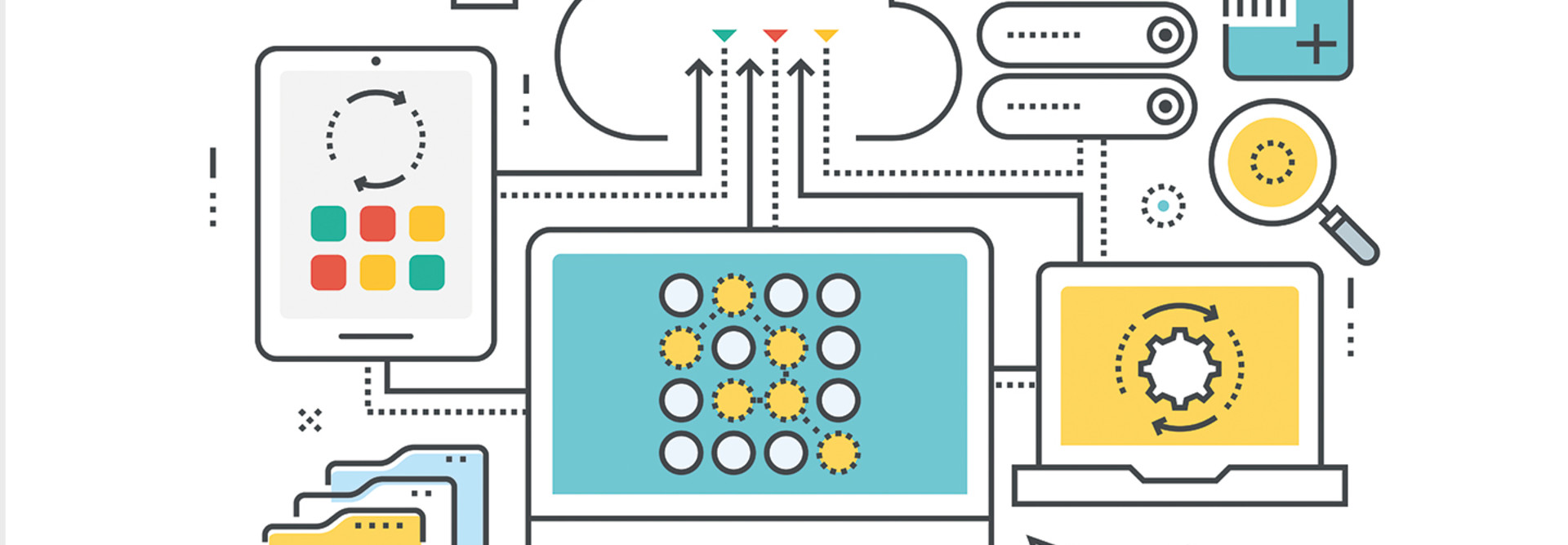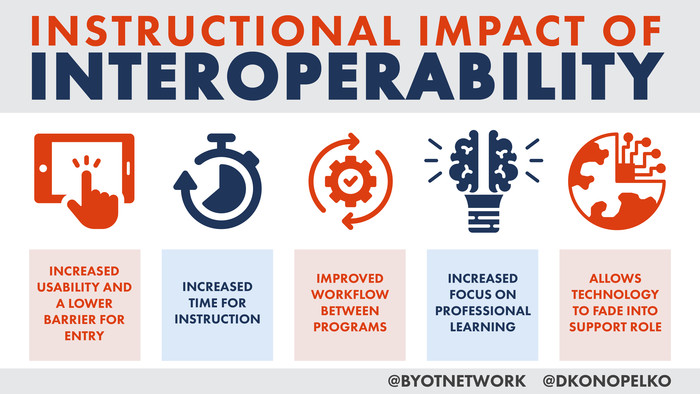To illustrate interoperability’s magnitude in the world of an educator, consider the following ‘day in the life’:
Mrs. Bond teaches precalculus. As her students walk into her classroom, they quickly recount the prior day’s lesson and do a close read of the learning standard they are working on today. With a partner, they address what they already know about the standard and what misconceptions they may have, then share out with the class. They sign on to their computers and then log in to their learning management system (LMS) to grab their assignment for the day. The assignment requires that they log in to their instructional material’s publisher platform and complete a quick diagnostic to help target the content to their level. While they complete the diagnostic, Mrs. Bond uses the data in real time to create groups that will be targeting specific gaps in learning in their intervention program and through small-group instruction.
Each small-group activity had painstakingly been designed by Mrs. Bond the night before. She searched the internet for a variety of activities that her students would hopefully find interesting and that would still meet concepts addressed in the academic standard. She then provided instructions for each activity, including opportunities for reteaching and extension. As the students completed their assignments based on their instructional needs, Mrs. Bond rotated through each group of students to check for understanding, ask probing questions, monitor student behavior and clarify any necessary information.
At the end of class, the students recap their learning through a self-assessment and reflective activity. Throughout the class, Mrs. Bond has been entering notes on student performance, noting their strengths and weaknesses and how they can make progress moving forward. Then the next class walks through the door, and it starts all over again.
After four more lather-rinse-repeat cycles, Mrs. Bond is expected to make sure all of the learning artifacts and data from the day have been tracked and recorded back in her LMS, intervention program, assessment platform, instructional materials programs and the student information system where the gradebook is housed. This could mean going into three or four different systems and transferring information, such as scores on a performance task, among them. In addition, she must translate her notes from the day into action steps moving forward for the 107 students she saw that day, then repeat it tomorrow for another 72.
The above situation illustrates the myriad data points a teacher must securely maintain in multiple systems on top of everything else he or she must accomplish in the educator’s role.
This complication is alleviated by the solution of interoperability.
DISCOVER: Learn how K–12 schools can measure ed tech ROI with data.
What Is Interoperability?
Interoperability involves multiple systems sharing a language or a framework for language that’s designed to help them function together as a whole to improve usability and/or security. Interoperability in practice might look like many systems acting as one based on a shared data standard. Interoperability is synchrony.
Some systems already have interoperability and ubiquitously adopted standards. Our libraries have (for the most part) settled on a standard for filing and organizing their books. When you open a toolbox, you generally find two types of screwdrivers: Phillips and flat-head. Most large home appliances are a standard size to allow you to swap them out when one fails.
What Is the Importance of Interoperability to Instruction?
So why is interoperability important in education? As the variety of educational systems and apps exponentially increases each year, the entropy of the system is bound to increase as well; the second law of thermodynamics seems to hold true for educational systems. With more systems, there are more pieces of data with different names for different fields.
Data standards, like those created and supported by IMS Global Learning Consortium, seek to eliminate those discrepancies. If the systems were speaking the same language with the same labels for the same data, then all of your programs could seamlessly communicate with each other and securely share important data.
READ MORE: Find out why schools should establish a data-driven culture.
How Can We Solve Instructional Pain Points with Interoperability?
What pain points could interoperability have potentially relieved in the above scenario?
First, one login could be leveraged through a single sign-on (SSO) platform for all of the various systems. Each link to a new resource automatically and securely logs the teacher and students in to that new application. As they complete assignments and assessments, their performance is automatically scored and transferred to the appropriate system of record.
Based on that data, Mrs. Bond or the students themselves could receive recommendations of other resources and strategies categorized by metadata (descriptive information, such as title, grade range, permissions, publisher, etc.) and aligned to academic standards to better meet each student’s learning needs. At the end of the class, the student and teacher will know exactly what concepts have been mastered, as all of the performance data has been safely and privately transferred to one comprehensive record, dashboard or gradebook, perhaps with badges to demonstrate accomplishments.













